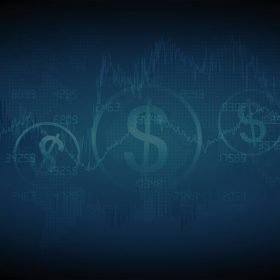Banking Crisis Update — What Happened?
By Terry Savage on March 19, 2023
Update: March 19th. I posted the article below on Monday, March 13th — and everything I wrote has been verified over the past five days.
The “crisis of confidence” spread to other regional banks, and one big Swiss bank that had previously suffered from poor management and made serious lending errors.
But over the past few days, the unease about the safety of deposits in good, well-run U.S. banks has spread. THERE IS NO REASON TO BE AFRAID OF THE U.S. BANKING SYSTEM. The Fed and government officials have made good on every insured deposit in every single bank failure over the past 100 years. This time will not be different.
That said, I have always said that you should never keep more than the $250,000 insured limit (per person) in any one bank. There is absolutely no reason to have uninsured deposits. Either open an account in another bank or buy U.S. Treasury Bills (https://www.terrysavage.com/t-bills-beat-cds/) — the safest investment in the world. In fact, that’s why T-bill yields dropped a bit in the past week — as the world rushed to the safety of U.S. government Treasury bills and notes, pushing prices up and yields down.
In the week ahead, there will be more headlines about banking issues. Keep your head on straight. We will get through this. It’s why you have “chicken money” in the first place — so you can sleep at night!
****************************************************************
The Fed, the Treasury, and the FDIC blinked. Although only deposits under $250,000 are supposed to be guaranteed in a bank failure, the consequences in the Silicon Valley Bank and Signature bank closings would have been huge. So, using a variety of techniques, those deposits OVER $250,000 at those two banks (and by implication, at any other bank that might fail) have been guaranteed.
Only the bank shareholders will lose money. Depositors will be made whole. No matter what the amount of the deposit.
That’s the headline from today’s events. But what’s the story behind the story? Here’s what really happened.
We think bank failures typically happen because the banks made bad loans. That’s what happened to the S&Ls in the late 1980s. And it’s what happened in the financial crisis of 2008, when banks had made mortgage loans to unqualified borrowers with zero money down. New regulations were supposed to fix that.
But the current liquidity crisis is quite different. SVB didn’t make bad loans. It bought U.S. government Treasury bonds – the safest investment in the world. At maturity, those IOUs are guaranteed to be repaid. But before they mature, the bonds can lose “market value” – something we all learned last year in our 40l(k plans when both stocks and bonds fell in market value.
When interest rates rise, bond prices fall. Yes, you can hold them to maturity and you’ll get your money back. But in the meantime, no one wants your old $1,000 face value bond with a 2% interest rate if currently those same, but newer, bonds are issued with a 4% interest rate.
If you’re forced to sell, you’ll take a loss –getting back less than the $1,000 face value.
And that’s what happened to SVB. Its depositors – many venture capital firms and tech firms – needed their deposits to fund operations in a slowing economy. But they took so much money out that the bank was forced to sell its government bonds – at a loss!
Suddenly they didn’t have enough “capital” to stand behind their loans, facing potential losses on all the bonds they held – but only if forced to sell. So there was a “run on the bank” by big depositors. They knew their deposits – running into the millions – were not Federally insured.
And that’s all it takes to start a run on a bank. A crisis in confidence.
The Fed and FDIC knew they had to do something. And they did. They guaranteed ALL deposits, and created new avenues for banks to borrow at the face value of the bonds they own. And they said this guarantee would be made through the FDIC, which raises money by assessing other good banks.
And then they crossed their fingers, hoping that confidence would return.
BUT – now the Fed is in a box. This all happened because they raised rates so far and so fast to kill inflation. And they were planning to raise rates again next week as they continue the fight. Now they’re forced to do exactly the opposite –push more liquidity into the system.
This is a classic case of “damned if they do, and damned if they don’t”! If they help “bail out” the banks, they risk igniting inflation again. If they don’t act, they risk bank failures destabilizing the economy.
So they acted – to guarantee ALL deposits in those banks – and, by extension, imply that ALL deposits everywhere in the system would be guaranteed.
Gold soared. Bitcoin soared since crypto holders figure their “coins” will be protected, too. And interest rates on short-term Treasury bills fell from over 5% to about 4.7% — in a rush to safety.
Now banks will have to raise deposit rates to attract money, cutting into profits. So their stocks are down. And the stock market is worried, so it opened down, before rallying on hopes the Fed will stop raising rates.
But more money is on the way into the system –good for stocks? And will the Fed dare raise rates again on March 22nd, when it was first widely expected to increase by 50 basis points?
Stay tuned for the next chapter in this soap opera –“As the Inflation World Turns.” It isn’t over yet. And that’s The Savage Truth.




